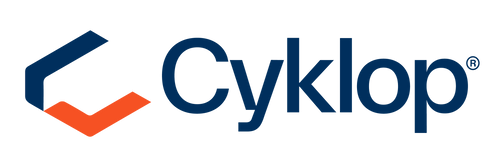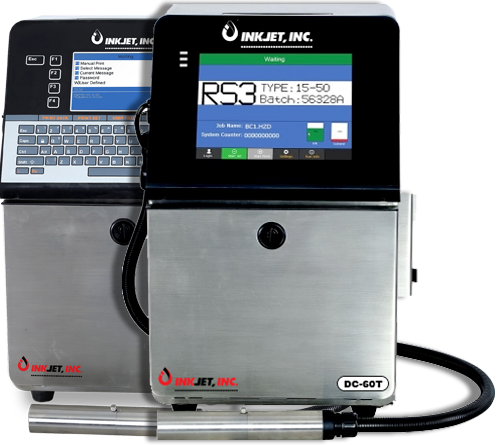Inkjet Printing On Rubber Parts & Products
Rubber is one of the most important materials used throughout the manufacturing world. Used to produce everything from small rubber bands and doormats to tires, hoses, gaskets, and other important automotive/aerospace hardware, rubber is interwoven into the fabric of our daily lives. Due to rubber’s strength and application diversity, the material has become increasingly utilized worldwide with annual rubber production has increased by around 6 million tons over the last 20 years.
Along with this growth in rubber production is an increasingly complex supply chain network used to distribute it. Often crossing international borders, these networks rely on traceable codes and markings to ensure that all products and substances are accounted for and shipped to the correct locations.
These take the form of:
- Barcodes/QR codes
- Serial numbers
- Batch codes
These markings are essential to both supply chain functionality and quality control. As such, companies must apply these codes to all of their products and parts to comply with industry standards and government regulations. For businesses that produce thousands of parts a day, this can seem like a daunting task.
Fortunately, coding rubber products on an industrial scale isn’t difficult with the right technology. At InkJet, Inc., we help companies complete these applications by providing the hardware and ink necessary to code products in a fast, reliable manner. Here’s how businesses can comply with strict regulations without sacrificing overall efficiency by inkjet printing on rubber parts.
Find an Inkjet Printer That Fits Your Production Line Needs
To meet supply chain requirements and comply with government regulations, manufacturers need to use reliable marking hardware that can stand up against the challenges of industrial rubber marking. These challenges take many forms including:
- Speed: Modern production lines move at hundreds of feet per minute. Line operators need to use hardware with high-speed capabilities in order to place codes without sacrificing operational efficiency.
- Heat: Many workplaces utilize high heat to form rubber into the needed product shape. This raises the overall temperature within the facility, possibly affecting the performance of marking hardware. To create long-lasting codes and avoid downtime, companies must use coding hardware that is designed with an operational temperature that meets their needs.
-
Dust: Similar to heat, rubber facilities are often home to flying dust particles. These particles can end up entering unprotected printers to the detriment of the hardware inside. Without hardware fortifications, this can significantly lower code quality and damage the overall marking system.
At InkJet, Inc. we offer a variety of marking options that meet these needs and more.
Continuous Inkjet Printers: DuraCode Touchscreen, Keyboard, and Pigment
Continuous inkjet (CIJ) printers are non-contact production line printing systems designed to mark substrates moving at 300 m/min and above. Built with powerful ink circulation systems, CIJ printers can operate up to 24 hours daily without downtime. The wide ink compatibility and versatile printheads of CIJ printers equip users to mark diverse rubber materials of different colors and textures.
See the chart below for a closer look at the DuraCode models’ most important specifications.
Thermal Inkjet Printers: Anser U2, X1, and A1 Models
Thermal inkjet (TIJ) printers are smaller, lighter, and more cost-effective than CIJ systems. While CIJ systems typically weigh around 100 lbs and can cost well over $10,000, most TIJ models weigh 5-10 lbs and cost as low as $1,499.00.
Although thermal inkjet systems are compact and lightweight, they offer impressive coding specifications. For example, the Anser U2 Smart can create 400 x 300 DPI codes up to 0.5” tall (1” tall with the Anser U2 SmartOne). Higher-end TIJs like the Anser X1 can create 600 x 600 DPI codes up to 2” tall with stitched printheads. These qualities enable TIJ operators to complete rubber marking tasks as well as case coding applications
TIJ printers are often designed for slower speed lines and intermittent coding tasks, but some TIJ models offer high-speed capabilities as well. InkJet, Inc. carries numerous TIJ printers of varying specialties and price points. Our current options include:
See the chart below for a closer look into how our TIJ options compare to one another:
Use an Ink That Works for Your Surfaces
When operating an industrial marking line, your ink choice is just as important as your hardware choice. All ink formulas have different properties that affect how well they adhere to surfaces. Inkjet printing on rubber can be particularly difficult due to the color and elasticity of the material. If one doesn’t use a compatible ink for their rubber substrates, the codes can come out either illegible or vulnerable to touch, heat, and other environmental factors.
To help companies avoid these problems, InkJet, Inc. offers a number of rubber-compatible formulas, including those with special properties like:
- High-temperature resistance
- Alcohol resistance
- Non-transferability
-
Different colors
If we don’t already carry a formula that fits all of your needs, we also offer custom ink creation services. No matter which properties you require in your ink, InkJet, Inc. has something for you.
Inkjet Printing on Rubber Isn’t Difficult When You Have Expert Help
Do you need to improve your rubber printing operation? With the hardware and ink selection available from InkJet, Inc., you can ensure that all of your rubber parts comply with supply chain policies and government regulations. Call today to learn more.
For more information on inkjet printing on rubber parts and products, contact us today online or call 1(800) 280-3245








